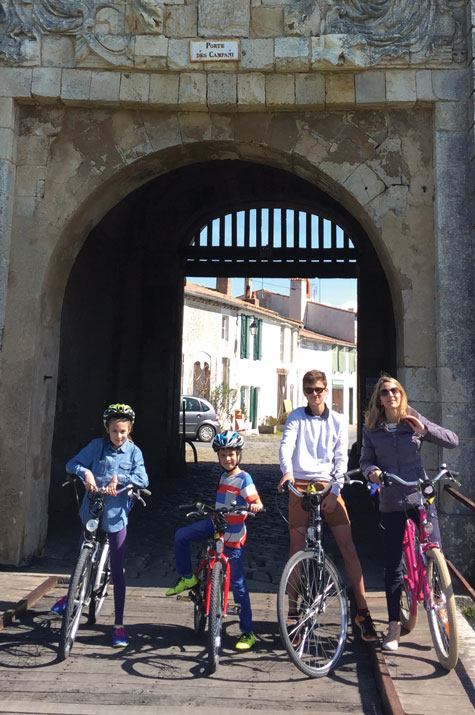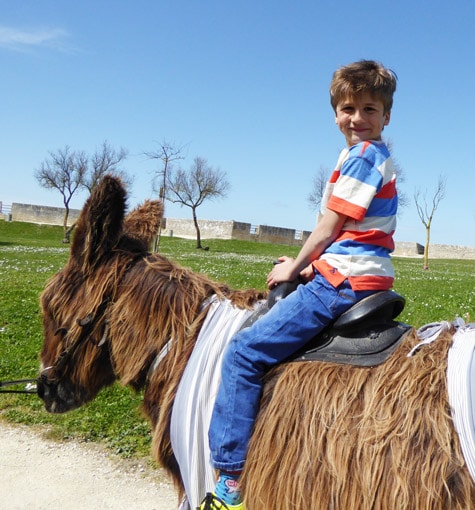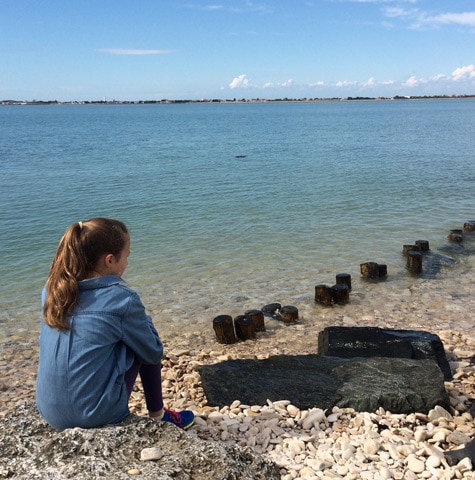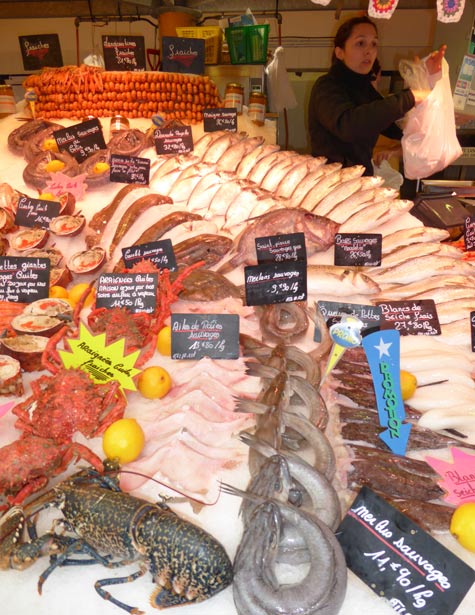Sarah Merson and family take to their bikes to discover Ile de Ré, the French Atlantic island that in-the-know Parisians have been visiting for years
There’s a slight groan from our children – Louis, 13, Olivia, 10, and Jude, eight – when I tell them we’re going on a cycling holiday in France. It isn’t exactly the response I’d been hoping for, and I’m mildly concerned that they should baulk at any holiday they’re lucky enough to go on, until I quickly realise that they’re thinking of the lung-busting Tour de France circuit we watched on television last year.
Thankfully, when I tell them about the Ile de Ré, a little island off the coast near La Rochelle, 19 miles long and just three miles wide, which has almost 70 miles of cycling paths and not a hill in sight, the usual excitement of any family holiday ensues. This little Atlantic island claims as many hours of sunshine as the South of France, but it’s a very different scene from the glitz of the Côte d’Azur. Here, you’ll find working fishing boats instead of super-yachts, and bicycles instead of Ferraris.
On day one, we collect our two-wheel transport from the local cycle hire shop (cycland.fr). I’m especially pleased with my raspberry-pink city bike, which comes with a nice wide padded seat and wicker basket on the front. Olivia has a city bike too, while my husband Josh and the boys have mountain/city-bike hybrids that prove to be just rugged enough but with the necessary comfort to go the distance.

Il de Ré has picturesque sights whichever way you turn

Jude enjoys an ice in Saint-Martin-de-Re
We set off from La Couarde-sur-Mer, the village we’re staying in, and head towards Saint-Martin-de-Ré, often named the ‘capital’ of the island. After just a couple of road crossings, we follow the bike- and pedestrian-only path sandwiched between the azure Atlantic and well-tended fields embroidered with vineyards.
Typically – and although he really doesn’t stand much chance – Jude vies for pole position in front of his older brother and sister. All three of them quickly become dots on the horizon, and by the time we catch up they’ve discarded their bikes and are standing in front one of the island’s many oyster farms, where the morning’s harvest, from a reef on the beach below, is being prepared – shucked, placed on ice with a twist of lemon and served, fresh (very fresh) to the customers lining up at the beachside shack. Intrigued, the kids ask if we can order some – not for them, they’re clear, but so that they can watch Josh and me eat them. Much to their disappointment, I explain that the salty taste and jelly-like texture are really not for me.
Back in the saddle, we meander through the vineyards and I attempt to regain cultural credibility by explaining the wine-making process. ‘So, what sort of wine do they produce here?’, Louis asks. My mind darts back to the leaflet I’d glanced at in the tourist office earlier. ‘Well, I know there are 600 hectares of vineyard on the island and 70 different winemakers… so there’s probably lots of variety!’
Arriving at the fortified town of Saint-Martin-de-Ré, the scene is so picturesque that it’s almost like a movie set. The burble of conversation coming from the many quayside cafés and restaurant terraces mingles with the tinkle of boat masts. We amble along the harbour to a fishing boat that’s just unloading the day’s catch. Since the oyster incident and my perceived ignorance when it comes to local viticulture, I’m on a mission now to prove my cultural agility, and hopefully inform my children.
‘See that fish there? That’s cabillaud. It’s local to these waters,’ I state. Louis and Olivia both give a convinced nod. Jude, meanwhile, has caught sight of the adorable shaggy-coated donkeys that, we learn, are among the island’s most famed residents. At the Parc de la Barbette, where they’re adorned with their own form of trousers, coming in this season’s stripe or plaid, we even get to have a ride on them.

The family in Saint-Martin-de-Re

Jude on his beloved donkey
Jude is overjoyed, not only by the all-round loveability of our new four-legged friends but also the fact that his particular mule strides out to complete the well-trodden circuit ahead of the rest of us. While he’s shrieking with celebratory ‘woo hoos’, we can’t help but give him a cheer for at last winning his own perpetual race for first place.
Over the course of the week, Ré – as we are soon affectionately calling the island – proves delightfully easy to get to know. Via country lanes, forest tracks and beachside boardwalks, we visit lots of the villages, each of which has its own distinct characteristics. At Sainte-Marie-de-Ré, perhaps the most traditional, we watch fishermen stand on the seashore in patient expectation. At Loix, which is boarded by salt pans, we discover the only tide mill in a good state of preservation on the island. Traditions dating back to the 12th century are employed here in the production of salt, considered the ‘white gold’ of the island.
Wherever we’re headed, we try to arrive in the morning, in time for the market. At Ars-en-Ré we come away with pretty pouches of fleur de sel to take home as presents. At La Flotte, where the marketplace is full of zingingly fresh fish and stalls selling spices, soaps, clothes, artworks and furniture, we leave with a number of shabby-chic finds.
We rack up a decent 90 miles of cycling all in all, yet it never feels like an effort. The omnipresence of the ocean and glorious beaches provides ample opportunity to stop for a while and mess about in the long dune ridges or kick around in the surf. On the expansive beach at Le Bois-Plage, families are playing volleyball and we join in for a while. Stretching for miles, this is the perfect beach for any kind of recreation. There’s something about the light here; the shimmering white sand illuminates and appears almost iridescent at times.

Olivia takes in the view

The family shop for supper at the market
On a slightly drizzly day we jump in the car to make the short trip to the Phare des Baleines, the lighthouse on the far western point of the island. It is among the tallest in France, and the children take delight in counting the number of steps. The only disagreement comes when a different number is calculated on the way back down, and of course they’re all quite adamant they’re right. Josh suggests they go up again, just to be sure. They all give a disapproving look, and nothing more is mentioned.
Evenings seem to fall into a similar pattern. Our charming rental house, aptly named Maison de Charme (from Ile de Ré Holiday Homes) proves the perfect family hangout. We enjoy cobbling together our supper from whatever we’ve found at the market during the day, eating it (sometimes BBQing it first) in the private courtyard garden, then taking the short stroll into the centre of La Couarde, where tourists and locals linger late. The ornate bandstand, dating back to 1895, plays host to a group of musicians, and there’s an infectious sense of joie e vivre. Normally a shy, more passive-natured type, Olivia dances on the cobbled streets with the local children. ‘Je t’aime, Ile de Ré,’ she booms.
Delighted, in equal measure, by my daughter’s display of happiness as well as the indication that, after four years of French lessons, she has actually learnt something, I have to agree. On our last night, we push the boat out and dine at the slightly bohemian Le Bistrot du Marin on the quay in Saint-Martin. I order the cabillaud and a glass of local rosé. When it comes, Louis pipes up: ‘That looks just like cod. And, by the way Mum, still and sparkling wines are produced here but best known is the Pineau. They’re also big producers of Cognac… Just so you know.’ I give him my impressed smile, but say nothing.
All in all, laidback Ré provides a refreshing and even surprising family holiday. With children who are fast growing up (and sometimes outwitting me), time spent pootling about here feels a bit like the good ol’ days. Family is at the heart of the Ile de Ré, and this is an island that has captured mine.

The family fell in love with Il De Ré
Brittany Ferries operates the longer routes from Portsmouth, Poole and Plymouth direct to Brittany and Normandy. Portsmouth to St Malo mid-season fares start from £440 return for a car and family of four, including an en-suite cabin on the outward overnight sailing. Brittany Ferries (brittanyferries.com), Flybe (flybe.com), Ryanair (ryanair.com) and easyJet (easyjet.com) fly direct from regional airports across the UK to La Rochelle. Transfer to the Ile de Ré takes 15 minutes.
Ile de Ré holiday homes has three beautiful family-friendly houses, from €790 for a week; iledereholidayhomes.com
Villas des Oliviers has three holiday houses for rent, from €880 for a week (plus €120 cleaning fee); villasdesoliviers.com
Les Minutias Village in Saint-Martin is a cheerful holiday complex with villas for up to six people. Prices from €710 per week for four, inclusive; les-minutias-village.com
Bistrot du Marin Saint-Martin
Cosy, bistro-style pub on quai Nicolas Baudin. +33 5 46 68 74 66
Auberge Paysanne de la Mer The Sury’s oyster shack in La Couarde-sur-Mer; +33 6 83 08 20 38
Le Taxi Brousse
La Couarde-sur-Mer. Very trendy – teenagers will love it for its outdoor pool area facebook.com/letaxibrousselacouarde
La Fiancée du Pirate
La Flotte. An informal family restaurant; +33 5 46 09 52 46